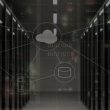Application modernization is key to improving customer experience
The pandemic exposed critical gaps in the government’s ability to efficiently deliver essential services in a time of crisis. In addition, aging applications and IT infrastructure presented formidable challenges when scaling to meet the demand for both services and information. As the world moves steadily toward complete reopening, how have citizens’ needs changed, what lessons did state and local governments take away, and how have the last 18 months changed the course and pace of digital government progress in the future?
There’s mounting evidence that modernizing applications through a user lens is now a top priority for public sector organizations—and they are looking for ways to move faster.
Driving toward innovation in the citizen experience
On the heels of the pandemic, state and local governments are looking for ways to inform and deliver services to citizens in new and innovative ways. According to recent global research, public sector organizations clearly understand the importance of elevating the customer experience. They rank customer experience modernization as a top-three strategic priority—in a statistic virtual tie with IT security and compliance and IT strategy.
In fact, 90 percent of the 300 public sector respondents report that customer experience initiatives are underway in their organizations. However, many of these initiatives remain siloed, with 46 percent of respondents saying such initiatives exist in only certain areas of the organization versus extending across the enterprise.
The story gets even more interesting when we look deeper. For example, public sector organizations are significantly more focused on elevating customer experience for external users over internal users. Seventy-five percent are improving customer experience externally, while only 63 percent are improving it for internal “customers.” This disparity is significant in today’s tight labor market, where public sector organizations struggle to compete for the best talent. Job candidates increasingly expect the systems they use at work to be as intuitive as those they use in their personal transactions.
The bottom line is that public sector organizations are receptive to change. More than 70 percent say that their organizations are either extremely receptive or very receptive to using technology to improve customer experience.
This is good news for citizens and those who serve them. The question now is how organizations can move faster toward citizen experience goals, including critical application modernization. A cohesive multicloud strategy is an essential part of the answer.
Managing multicloud
As the last Federal stimulus package continues to bring billions in fiscal relief to states, localities and Tribal governments, there has never been a better time to invest in the power of the cloud—more specifically, the power of multicloud. Multicloud offers state and local governments the flexibility to take advantage of the strengths of multiple vendors to meet mission needs and accelerate application modernization. It also delivers a strong hedge against potential security threats and service outages. Further, a multicloud strategy allows public sector organizations to avoid vendor lock-in, giving them the power to run applications and workloads in the most appropriate environment. Multicloud also helps optimize IT budgets and expands public sector organizations’ ability to compare pricing, negotiate and fully leverage the cost savings of cloud.
But multicloud comes with greater complexity. It requires a new layer of expertise, management and reporting, and it brings new challenges to every phase of the lifecycle: design, build, secure, manage and optimize. The right strategy for the complete lifecycle will maximize value and reduce the risk and cost associated with missteps that necessitate multiple moves. The ability to expertly navigate multicloud’s complexity and optimize security are the keys to long-term success.
As state and local governments prepare to accelerate customer experience modernization with multicloud, it’s important to keep these key tenets at the forefront:
- Build a solid business case to get leadership buy-in and organization-wide support
- Evaluate in-house skills and seek out experienced providers to fill gaps, provide best practices and extend capabilities
- Ensure security first and foremost—take the time and garner the expertise needed to properly evaluate datasets and applications to set the proper security and governance policies to reduce risk and unnecessary expenses down the road
- Define success metrics for your citizen experience strategy at the outset to benchmark progress, demonstrate value and maintain momentum for the role of multicloud in accelerating modernization
Navigating the ever-evolving multicloud ecosystem is no easy task. Organizations increasingly seek a trusted guide who can provide unbiased insight and a clear path forward while eliminating a mounting operational burden. Collaboration is key in this brave new world.
Citizen needs and employee expectations are changing every day, and state and local governments need to move faster to meet them. This means scaling citizen experience transformation from siloed initiatives to enterprise-wide modernization. Multicloud is an integral part of the equation. With a multi-faced strategy to navigating multicloud, state and local agencies can solve problems faster, smarter, and stay ahead of what’s next.
Phil Fuster is the senior director for public sector at Rackspace Technology, where he manages the sales, marketing and business development across the federal, state, local, higher education and federal systems integrator market. Fuster has spent the last 35 years in the public sector technology industry. He has been part of giants like Dell, Computer Sciences Corp. and NeXT Computer, as well as having founded FedBid.com and International Data Products Corp. Fuster has served on the Maryland Technology Council and co-chaired the MTC Cyber Security Conference.




















